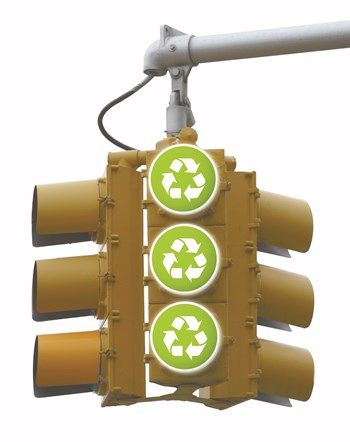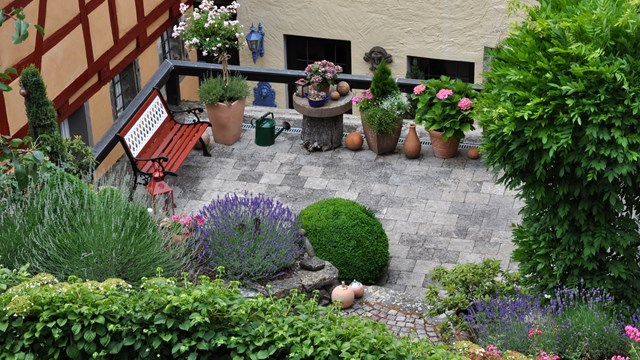
According to the U.S. Green Building Council, Chicago had more certified green buildings than any other city in the United States in 2009—and that number continues to grow.
A whopping 88 projects in the Chicago-area earned Leadership in Energy and Environmental Design certification, followed by Portland with just 73. Translation: Chicago has the largest number of energy-saving building systems, proximity to public transportation and water conservation techniques.
All of this green stuff means that residents feel very strongly about their homes and buildings being eco-friendly.
Benefits of Going Green
While it’s common for buildings or associations of any size to have designated committees in place to help boards and management handle aesthetic, social and other community concerns, ‘green’ committees are emerging as a more recent trend throughout Chicago and across the country as environmental consciousness is raised.
Green committees are similar to any other building committee in the sense that they’re typically a group of residents who are voted into the committee to help with a common goal. In the green committee’s case, the goal is creating an eco-friendly building environment that can influence everything from the paint choices they use when painting the common areas to creating, installing and maintaining a green roof for the building.
What You Can Do
Recycling, energy and water conservation, composting and improving landscaping techniques and methods are just a few of the things green committees may devote themselves to working on—and often, there are local and state-sponsored organizations and resources to help them achieve their goals.
“It’s important for homeowner associations to prioritize with a green committee because minor tweaks to a building can greatly improve its performance,” says Grace Lunsford, owner and managing director of Green Dream Group, an organization that strives to make buildings more eco-friendly.
While this concept may not have been around just a few years ago, it’s becoming popular in Chicago, where residents are doing their best to maintain their building and the planet through eco-friendly measures.
Jim Stoller, MBA, president of The Building Group in Chicago, a management company that manages more than $2 billion in real estate assets including residential, office, retail and industrial properties—says that more and more of his buildings are deciding to create stand-alone green committees.
One of the first—and easiest—ways that the green committees encourage residents to get involved is through the city-recycling system. Chicago allows anyone to bring batteries and electrical equipment to Goose Island to be recycled.
“We typically have a spot in the building where people can leave their equipment to be recycled,” Stoller says. “When there’s a certain quantity, someone from the green committee will carry it all over there.”
Stoller’s green committees will also test green cleaning products and recommend their favorites for the buildings’ cleaning crews, in addition to offering suggestions on products that residents can use in their own units.
It’s not all about being green, however.
Unit owners, boards and management groups have found that many of these eco-friendly measures are also cost-saving strategies as well.
“Many condo buildings have similar comfort, health and safety issues, and if the association collectively assesses these problems through a comprehensive home performance analysis, they can also collectively bargain for the improvements and save lots of money,” Lunsford says. “We are seeing high performance homes and condos sell at a 9 percent premium as well, and in this struggling market, any edge over other properties is a good one to have. Remember, a high performance building is not only more energy efficient—therefore more ‘green,’ but it will also cost less, require less maintenance in the future and be more comfortable for all homeowners.”
Two of the quickest returns on investment are the installation of energy efficient lights and the installation of variable speed drives on building system motors, says Elena Lugo, LEED AP director of marketing and operations at Wolin-Levin, a Chicago-based building management company.
Energy efficient lighting installations are most successful in garages due to the scale and the aesthetics, while hallways and entryways get more difficult due to fixtures and fewer options. Variable speed drives can be easily installed on any building’s system motor for pumps or fans, creating a greater efficiency within that system, Lugo says.
Less common projects are green vegetation roofing, sustainable landscaping and vehicle charge stations, she says.
In 2009, the City of Chicago passed a new code for more efficient roofing, which included greater insulation and reflectivity for flat roofs—so moving forward, any roof installations have followed this code.
One of the reasons why the green committees are able to get so much great eco-friendly work done in their buildings are because residents react much more strongly to recommendations by their peers rather than suggestions or mandates by the management companies.
“There’s a sense of excitement and camaraderie,” Stoller says. “If management says, ‘You have to recycle,’ that’s one thing. But if the green committee suggests recycling, then the residents are much more likely to do it.”
Still, management companies are usually involved in some sense.
Some green committees ask Stoller’s management company to help out, while others don’t want them to be as involved.
Get the Board on Board
It’s up to the board, and it can be a little complicated. “If a board is looking to go green but can’t pinpoint their exact ambitions due to the plethora of options available, then a committee should be created to help with the research and priorities,” Lugo says. “The board should then make decisions on what projects they would like, and the feasible timeline for implementation. Management would then bid out services, submit the proposals for board review and then schedule projects accordingly.”
They key in whatever they do is to create programs the green committee and the board are committed to implementing. Then create programs that can be easily incorporated into the daily lives of the homeowners, provide support for questions and educate the importance and the impact everyone can make, Lugo suggests.
Once one or two people decide to form a green committee, they can turn to the State of Illinois for necessary and helpful resources to continue their plans. The state also offers financial resources to drive efficiency incentives.
The first step would be to ask your city within the state if they have a sustainability department.
The City of Chicago eliminated their Department of Environment, but still have several resources and incentives available on their website, Lugo says.
If your building is outside Chicago, you can go to your city or county to find out which programs are available.
Then, turn to the utility companies’ programs. ComEd, Nicor and People’s Gas all have their own energy efficient incentives.
“All of these resources will have options for individuals to implement projects within their homes, and some have programs to aid larger projects such as building system replacements and landscaping erosion, among others,” Lugo says.”
If your green committee is looking for a more holistic approach or a green building certification, then they can get help from the three most popular building certifications: LEED with the US Green Building Council, Green Globes or Energy Star. Currently, Energy Star does not have a multi-residential certification, but is expected to have one in 2013. Energy Star is also focused on energy only, rather than complete sustainability. LEED and Green Globes look at all building components in addition to other eco-friendly moves such as air quality and landscaping.
When it comes to letting unit owners know everything that’s going on within the green committee, email is the way to go, Stoller says.
“Everyone likes email because it’s green,” he says.
If you really want to reach everyone, however, multiple communication avenues are always the best way to ensure a broader reach: email, newsletter, social website and the management’s Web site, Lugo says.
And, like any other designated committee, the green committee head should be included to represent at the board meetings.
Meeting notices distributed to homeowners including an agenda will tend to loop in interested parties to participate in meetings.
If the green committee is implementing programs such as recycling or other programs within the homeowners’ units such as filter changes, green cleaning products and energy efficient lighting—education and training is vital to success.
“Setting up presentations that are convenient for homeowners to attend is helpful, but also making education available through literature, online programs or videos makes learning much more convenient and success rates higher,” Lugo says.
The green committees would do best to keep up with the new Chicago eco-friendly rulings. New energy codes coming out in 2013 will require building system replacements to be more energy efficient or sustainable.
They should also continually watch for changes involving green rebates and other cost saving measures that the state and national governments put into place to encourage green living.
“I do not expect communities to spend money in order to be green,” Lugo says. “Waiting through the expectant life of a building system and then replacing it with a product that will save them time and money is all anyone should do. Not to be disadvantageous with large initial costs, but instead with simple solutions that have proven cost benefits.”
It Just Takes One
So while you may not have your own green committee, you can always encourage recycling when the board is speaking about garbage choices; ask about energy efficient light bulbs the next time someone runs to Home Depot to replace the current light bulbs; and before grabbing a bottle of Windex to clean the tables in the lobby, you can ask the board to switch to a more eco-friendly, natural cleaning solution.
It only takes one or two or a handful of residents per building to form a green committee but doing so can make real changes to your homes, the planet and your community’s bottom line.
Danielle Braff is a freelance writer and a frequent contributor to the Chicagoland Cooperator






Leave a Comment